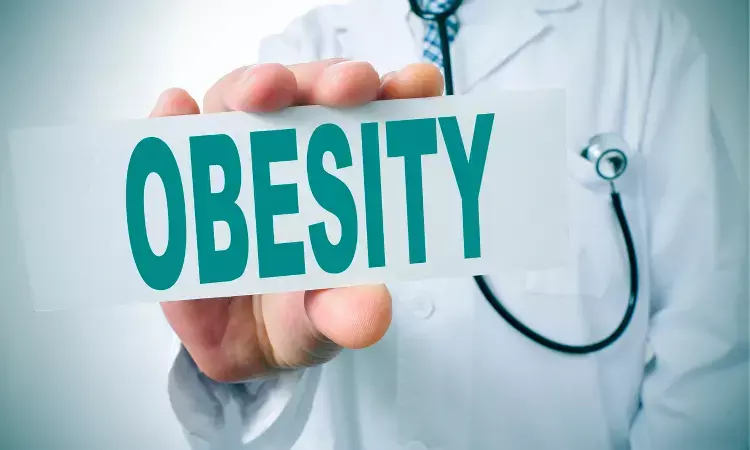- Home
- Medical news & Guidelines
- Anesthesiology
- Cardiology and CTVS
- Critical Care
- Dentistry
- Dermatology
- Diabetes and Endocrinology
- ENT
- Gastroenterology
- Medicine
- Nephrology
- Neurology
- Obstretics-Gynaecology
- Oncology
- Ophthalmology
- Orthopaedics
- Pediatrics-Neonatology
- Psychiatry
- Pulmonology
- Radiology
- Surgery
- Urology
- Laboratory Medicine
- Diet
- Nursing
- Paramedical
- Physiotherapy
- Health news
- Fact Check
- Bone Health Fact Check
- Brain Health Fact Check
- Cancer Related Fact Check
- Child Care Fact Check
- Dental and oral health fact check
- Diabetes and metabolic health fact check
- Diet and Nutrition Fact Check
- Eye and ENT Care Fact Check
- Fitness fact check
- Gut health fact check
- Heart health fact check
- Kidney health fact check
- Medical education fact check
- Men's health fact check
- Respiratory fact check
- Skin and hair care fact check
- Vaccine and Immunization fact check
- Women's health fact check
- AYUSH
- State News
- Andaman and Nicobar Islands
- Andhra Pradesh
- Arunachal Pradesh
- Assam
- Bihar
- Chandigarh
- Chattisgarh
- Dadra and Nagar Haveli
- Daman and Diu
- Delhi
- Goa
- Gujarat
- Haryana
- Himachal Pradesh
- Jammu & Kashmir
- Jharkhand
- Karnataka
- Kerala
- Ladakh
- Lakshadweep
- Madhya Pradesh
- Maharashtra
- Manipur
- Meghalaya
- Mizoram
- Nagaland
- Odisha
- Puducherry
- Punjab
- Rajasthan
- Sikkim
- Tamil Nadu
- Telangana
- Tripura
- Uttar Pradesh
- Uttrakhand
- West Bengal
- Medical Education
- Industry
Metabolic dysfunction increases risk for steatosis and fibrosis development: Study

USA: In a new study published in Clinical Gastroenterology and Hepatology, it was shown that metabolic dysfunction, as defined by the metabolic-associated fatty liver disease (MAFLD) criteria, is a major risk factor for steatosis and fibrosis development.
The MAFLD criteria are intended to capture the disease's heterogeneity in order to improve patient categorization and therapy. However, as is well known, the metabolic parameters utilized in nomenclature are complicated and linked, and their nuanced contribution to the definition must be evaluated in order to appropriately quantify clinical significance and stratify the at-risk group.
Kajal Claypool and colleagues used two models, one for each metabolic component, to investigate the relative predictive relevance of the seven core metabolic parameters described by the MAFLD criteria for steatosis and fibrosis outcomes in a nationally representative cohort, NHANES 2017-2018. They defined hepatic steatosis as the median liver stiffness evaluated by vibration-controlled transient elastography, and fibrosis as the controlled attenuation parameter (CAP) at the higher sensitivity cut-off point. All of the models were adjusted for diabetes, obesity, ethnicity, age, and gender.
The key findings of this study were as follows:
1. Independent of excessive BMI and diabetes, the presence of two or more metabolic variables enhanced the likelihood of steatosis and fibrosis.
2. Individuals with two or more metabolic variables were considerably more likely to have steatosis and fibrosis.
3. Insulin resistance and enhanced central obesity, as defined by increased waist circumference, were the top two metabolic variables for steatosis by odds ratio and Nagelkerke R2.
4. Elevated waist circumference was linked with aOR: 5.98 for CAP 290 dB/m, whereas insulin resistance, as determined by the homeostatic model evaluation of insulin resistance, was associated with aOR: 3.96.
5. Elevated waist circumference was related to an aOR of 4.43 for LSM 8.2 kPa, whereas insulin resistance was associated with an aOR of 2.8.
"This study sheds insight on the characteristics that dominate the link between steatosis and fibrosis (e.g., visceral adiposity and insulin resistance), revealing that traits that are common in the United States, and is also associated with a higher risk of liver disease," concluded the authors.
Reference:
Claypool, K., Long, M. T., & Patel, C. J. (2022). Waist circumference and insulin resistance are the most predictive metabolic factors for steatosis and fibrosis. In Clinical Gastroenterology and Hepatology. Elsevier BV. https://doi.org/10.1016/j.cgh.2022.05.021
Neuroscience Masters graduate
Jacinthlyn Sylvia, a Neuroscience Master's graduate from Chennai has worked extensively in deciphering the neurobiology of cognition and motor control in aging. She also has spread-out exposure to Neurosurgery from her Bachelor’s. She is currently involved in active Neuro-Oncology research. She is an upcoming neuroscientist with a fiery passion for writing. Her news cover at Medical Dialogues feature recent discoveries and updates from the healthcare and biomedical research fields. She can be reached at editorial@medicaldialogues.in
Dr Kamal Kant Kohli-MBBS, DTCD- a chest specialist with more than 30 years of practice and a flair for writing clinical articles, Dr Kamal Kant Kohli joined Medical Dialogues as a Chief Editor of Medical News. Besides writing articles, as an editor, he proofreads and verifies all the medical content published on Medical Dialogues including those coming from journals, studies,medical conferences,guidelines etc. Email: drkohli@medicaldialogues.in. Contact no. 011-43720751


